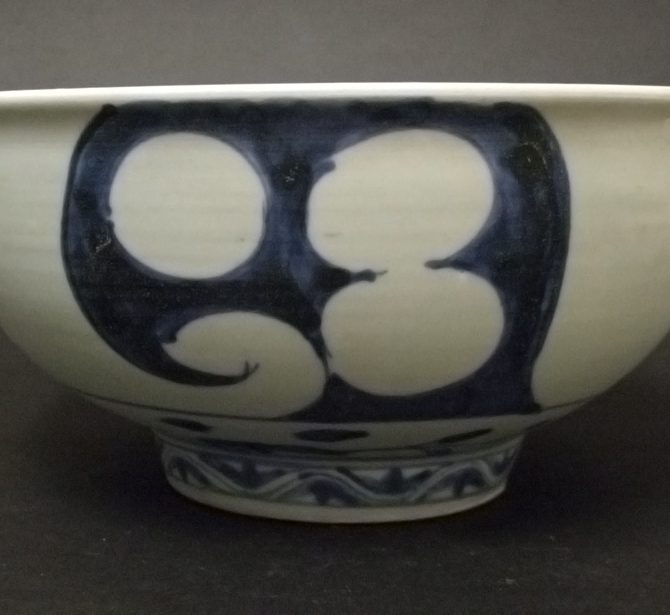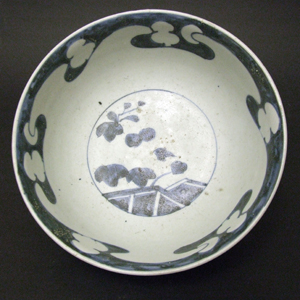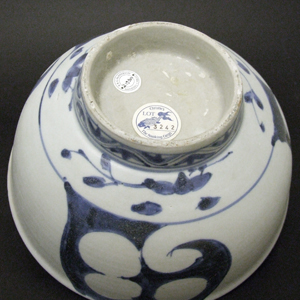
NANKING CARGO c.1750 Japanese Imari Porcelain
A Rare Private Trade Nanking Cargo Japanese Imari Bowl from the Wreck of the Geldermalsen c.1750.
SOLD
- Condition
- Good, the glaze somewhat degraded, the over-glaze decoration totally degraded apart from the feintest out-line. The well slightly pitted. There is a small chip on the footrim.
- Size
- Diameter : 23.5 cm (9 1/4 inches).
- Provenance
- The Nanking Cargo, Chinese Export Porcelain and Gold. Christie`s Amsterdam (28th April-2nd of May 1986) lot 3242 sold for 6,380 guilders. The Collection of Henry Woods-Wilson.
- Stock number
- 21990
Information
Japanese Porcelain from the Nanking Cargo :
Although 10`s of thousands of pieces of Chinese porcelain were recovered from the wreck of the Geldermalsen only four pieces of Japanese porcelain were excavated from the wreck. We are pleased to have three of these pieces for sale now, they are from the collection of Henry Woods-Wilson. The Japanese pieces from the cargo are all different, although two are barber`s bowls of the same size and form. They are clearly `Private Trade` pieces, distinct from the main cargo, the V.O.C. allowed a certain amount of private trading by the crew. These rare pieces recovered from the wreck provide a valuable insight into the Japanese porcelain being produced at the same time as the blue and white Chinese porcelain we refer to as `Nanking Cargo`.
Japanese Imari Porcelain :
Imari Porcelain is the European collectors` name for a type of Japanese Porcelain made in the town of Arita, in the former Hizen Province, north western Kyūshū, and exported via the port of Imari, specifically for the European Export trade. Imari was simply the trans-shipment port for Arita wares, no porcelain was made there. The kilns at Arita formed the heart of the Japanese Porcelain industry, which developed in the early 17th century. Although Imari originating in Japan the tern is used to describe a whole range of ceramics from all over the world, they are all linked by their bright distinctive palette of blue, red and gold. The cobalt that created the blue was added prior to glazing, while the iron-oxide red and the gilding were applied after glazing.
The Geldermalsen :
The Geldermalsen built in 1746 was one of the newest and finest Dutch East Indiamen. It is one hundred and fifty feet long and forty-two feet wide. Captain Jan Morel, 33 years old, his many Dutch sailors and sixteen Englishmen set sail from Canton. On Monday January 3rd 1752 the Geldermalsen on its way to Holland hit a reef and sank. The survivors struggle on in a barge and long boat and reach Batavia in eight days. The wreck held a most valuable cargo of tea, as well as Chinese silks and textiles. All now lost. The vast porcelain cargo, as well as gold has survived. Tea was the real reason for the journey, ceramics accounting for only five per cent of the total value. The loss of the Geldermalsen cost the Dutch East India Company 900.000 guilders. However the porcelain from the sister ship the Amstelveen sold for far more than normal because it now carried all the porcelain to be sold in Holland that year. See `History` for more information about the Geldermalsen and other shipwrecks.

